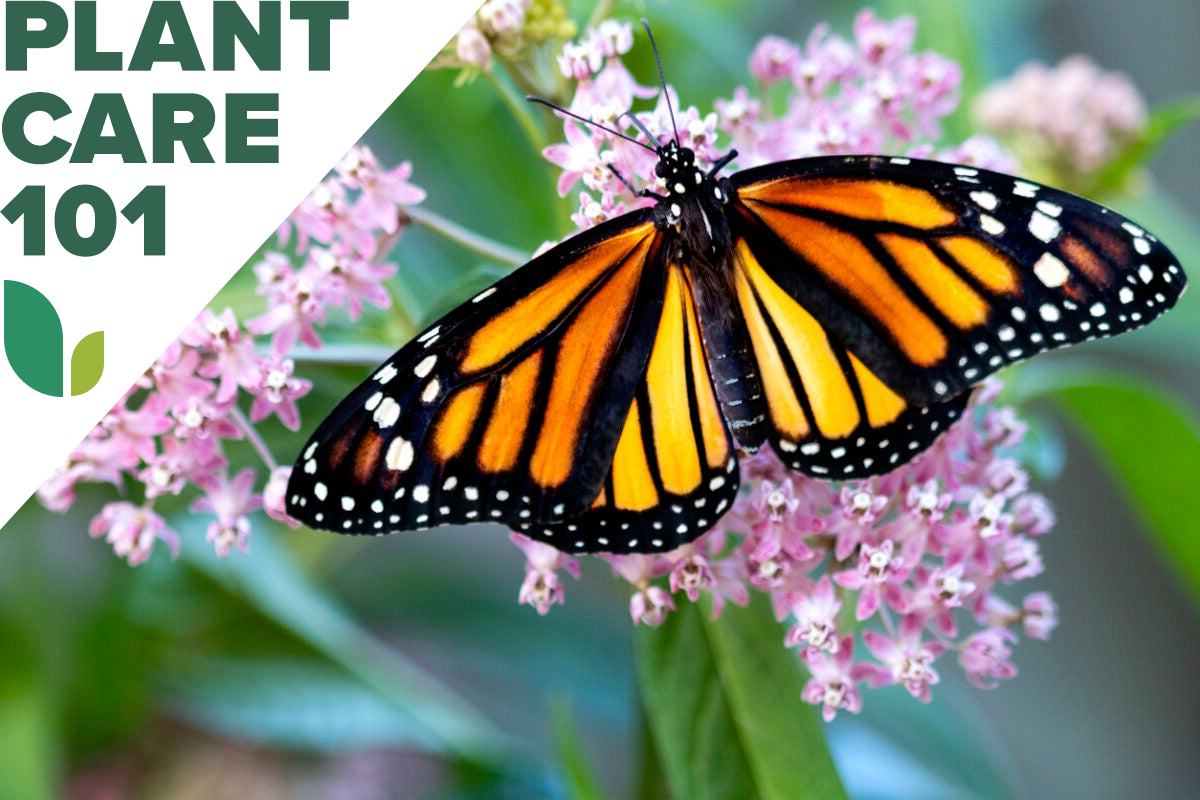We may earn revenue from the products available on this page and participate in affiliate programs. Learn More ›
While most pollinators can survive on a variety of plants, monarch caterpillars rely exclusively on milkweed. The plant provides food and habitat for monarch butterflies and other pollinators. Adult monarchs lay their eggs on the underside of milkweed leaves, which provide shelter from sun, rain, and predators, as well as sustenance for hatchlings. And, because they ingest toxic substances from the plant, monarchs make themselves unappetizing to predators.
The many species of milkweed are native plants in most of the U.S. However, urbanization, agriculture, monoculture, and the use of herbicides and pesticides have decimated natural milkweed habitats. This has contributed to an 80 to 90 percent decline in monarch butterfly populations. Thus, it’s important for as many people as possible to learn how to grow milkweed to preserve monarchs and other pollinators.
RELATED: Grow This, Not That: 12 Native Alternatives to Invasive Plants
Growing Milkweed at a Glance
Is milkweed easy to grow? Given the right conditions, it’s not a tough plant to cultivate by any stretch. Native to North American prairies and wetlands, milkweed is a tough wildflower that doesn’t require a lot of pampering. Here are the basics to get you started:
Common Name: Milkweed
Scientific Name: Asclepias spp.
Hardiness Zone: 3 to 9
Soil: Well-draining; tolerates clay soil and poor, dry conditions; pH 4.8 to 7.2
Light: Full sun
Water: Doesn’t need watering except in extreme conditions
Food: Doesn’t require fertilizer
Propagation: By seed or cuttings
Safety: Toxic to people and pets
Milkweed Characteristics
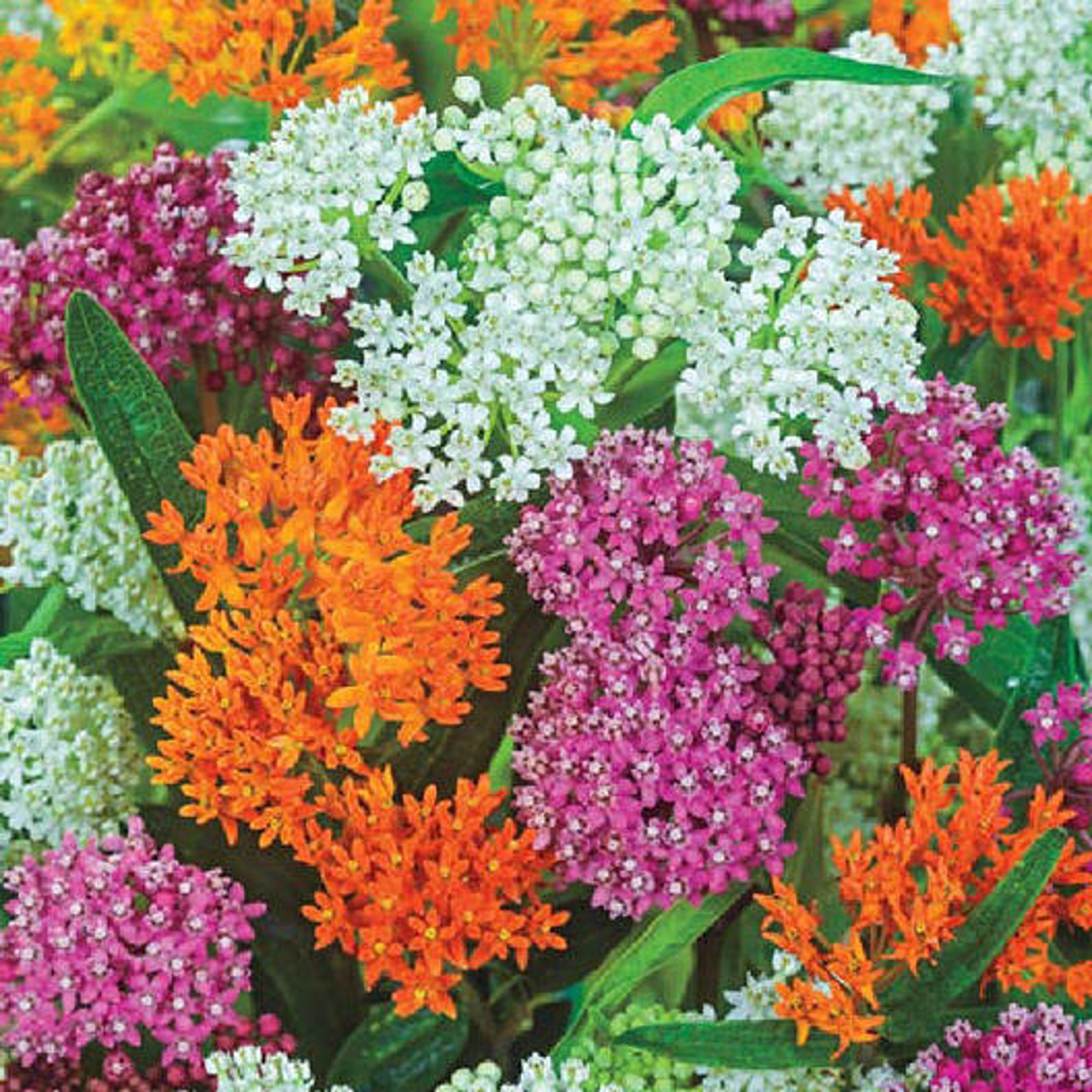
Milkweed belongs to the Asclepias genus of plants. Native to many parts of North America, more than 100 different native species, both perennial and tropical, can be found. Most have clusters of small pink or white flowers; tropical milkweed has yellow-orange flowers, and butterfly weed has bright orange flowers.
Many milkweed species are easily identifiable by their tall, thick stalks supporting broad, flat, rounded leaves. Those leaves are soft and velvety, due to fine “hairs” on the underside that help protect monarch butterfly eggs. Large clusters of small light-pink, purple, or white flowers are very fragrant. When its stems or leaves are broken, a sticky white sap appears—the inspiration for its name. That sap is medicinal and is used to treat some heart conditions.
There are native milkweeds that benefit the monarch butterfly with narrower leaves, but most have the telltale round flower cluster. Because of this, get to know the ones that grow best in your area.
Recommended Milkweed Varieties
There are approximately 100 varieties of milkweed. Here are some common ones you might want to try:
- Swamp milkweed (Asclepias incarnata) features pink and white flowers that monarch butterflies (and dragonflies) love. It does best in moist soil and full sun.
- Common milkweed (Asclepias syriaca) is another monarch favorite that features pink flowers. It prefers well-drained soil in undisturbed areas.
- Butterfly weed (Asclepias tuberosa) likes drier soil for its bright-orange flowers. A long-lasting plant, it features hairy stems but has no milky sap.
- Whorled milkweed (Asclepias verticillata) is an example of a thin-leaf variety of milkweed. It has a single stem and long, thin leaves that whorl out from the main stem. Although its flowers are not as stunning as some varieties’, this native to 41 states is an-easy care plant—often a volunteer plant.
- Showy milkweed (Asclepias speciosa) is a drought-tolerant variety found in western prairies and savannas, where light pink-to-purple flowers bloom for extended periods.
RELATED: 12 Ways to Rewild Your Suburban Plot
Planting Milkweed Plants
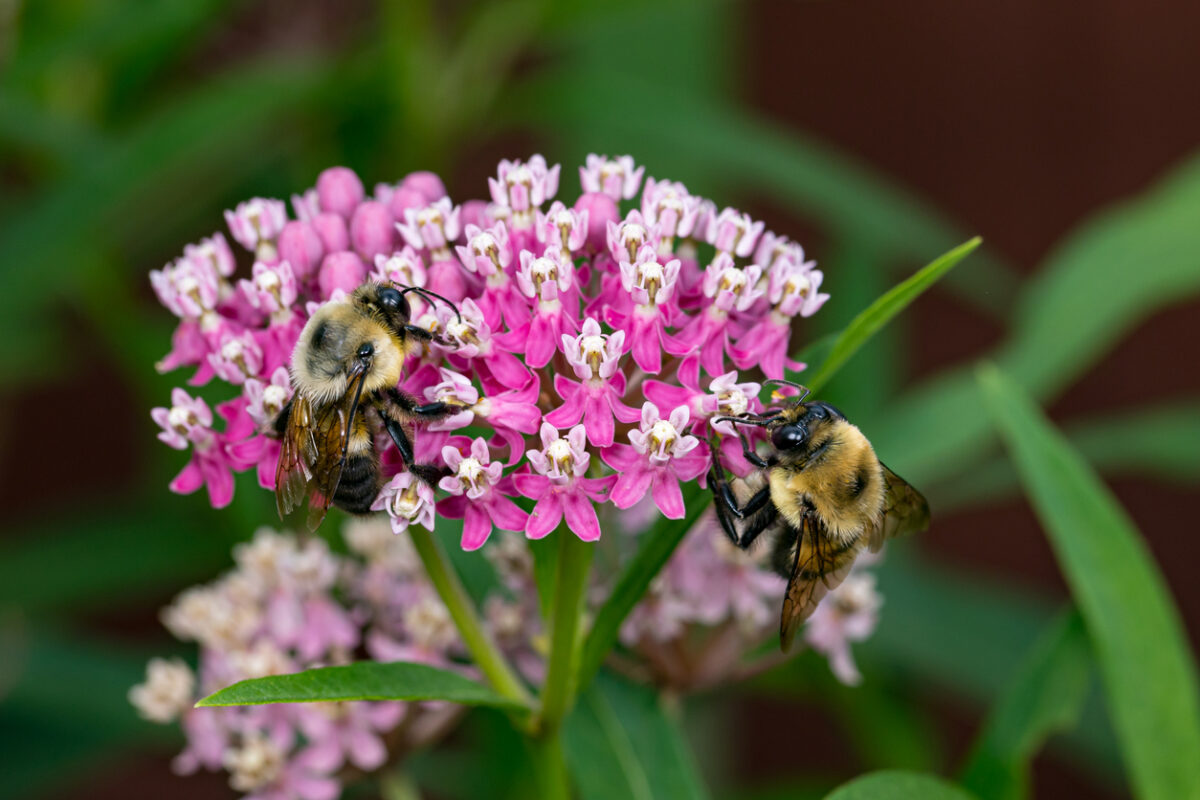
If you have a sunny meadow, field, or garden, you might consider planting milkweed seeds to save the beautiful monarch butterfly. Due to urbanization, farming techniques, and herbicides, milkweed isn’t available in the quantities it once was.
This fragrant wildflower will enhance your space and attract pollinators, so it’s an inviting and important addition to a pollinator garden. While monarch butterflies depend solely on milkweed as larvae, many other pollinators also enjoy the nectar, including other types of butterflies, honeybees, native bees, and hummingbirds.
Growing milkweed is relatively easy, once established. Given the right conditions, these native plants need little care. Do milkweed plants spread? After its first season of growth, the plant spreads quickly, both by rhizomatic activity through an underground root network and mature fruit (large pointed seed pods known as follicles) emanating seeds that scatter in the wind. Will milkweed grow back every year? Usually, yes, it will. Finally, how long does it take to grow milkweed? Milkweed seeds germinate slowly.
If you want to learn how to plant milkweed seeds and plants, read on for more answers to common questions.
When is the best time to plant milkweed?
Want to know when to plant milkweed in pots or when to plant milkweed seeds? Both the seeds and the plants can go into the ground in the spring or fall. If planting in fall, give milkweed enough time to become established before winter.
The plants will naturally self-seed, so they are accustomed to autumn sowing. In fact, winter’s cold and moisture helps to loosen the seed coats, enabling them to germinate in the spring. If you prefer to plant seeds in the spring, you have to break their dormancy with cold stratification to mimic these winter conditions.
Where can milkweed grow?
Different varieties of milkweed will do better in various growing conditions. Some varieties prefer the dry climate of the West, while others enjoy the moist soil found in the Midwest and Eastern Seaboard. There are also tropical varieties suited to southern regions and Mexico, but they are not native to the U.S. and best avoided.
Where does milkweed grow best? In general, milkweed prefers well-draining soil. It’s often found in meadows, prairies, fields, pastures, and along roadways. If you’re wondering how much sunlight milkweed needs to grow, give it full sun for 6 to 8 hours a day.
How do you plant milkweed?
You can grow milkweed from seed or milkweed sprouts. Some varieties, such as butterfly weed, don’t transplant well and are best sown by seed directly in the garden.
This is how to sow milkweed seeds:
- Select a bed with clump-free soil that has been raked or tilled to a fine consistency.
- Compact the seeds into the soil, but don’t cover them.
- Keep the soil moist until the seedlings are established.
- As they grow, thin them out if planted too closely together.
And here’s how to plant milkweed seedlings:
- Dig a hole twice as deep and twice as wide as the plant’s root ball. Amend the soil as necessary.
- Separate the roots slightly to encourage growth.
- Plant so that the top of the root ball is even with the soil line.
- Backfill soil around the plant and press the dirt around the plant to eliminate air pockets.
- Water well.
Can you grow milkweed in containers?
Some gardeners prefer to grow milkweed in containers—perhaps to contain their spread so they don’t take over a garden, as well as when dealing with limited space. Choose a container that is large enough to accommodate their long tap roots. Fill it with rich, well-draining soil.
Some of the best candidates for container growing are swamp milkweed and showy milkweed. If the container is large enough, mixing milkweed with other nectar-producing plants with similar watering needs is not only eye-catching, but attractive to pollinators.
RELATED: 3 Container Garden Combos for Attracting Pollinators
Watering Milkweed
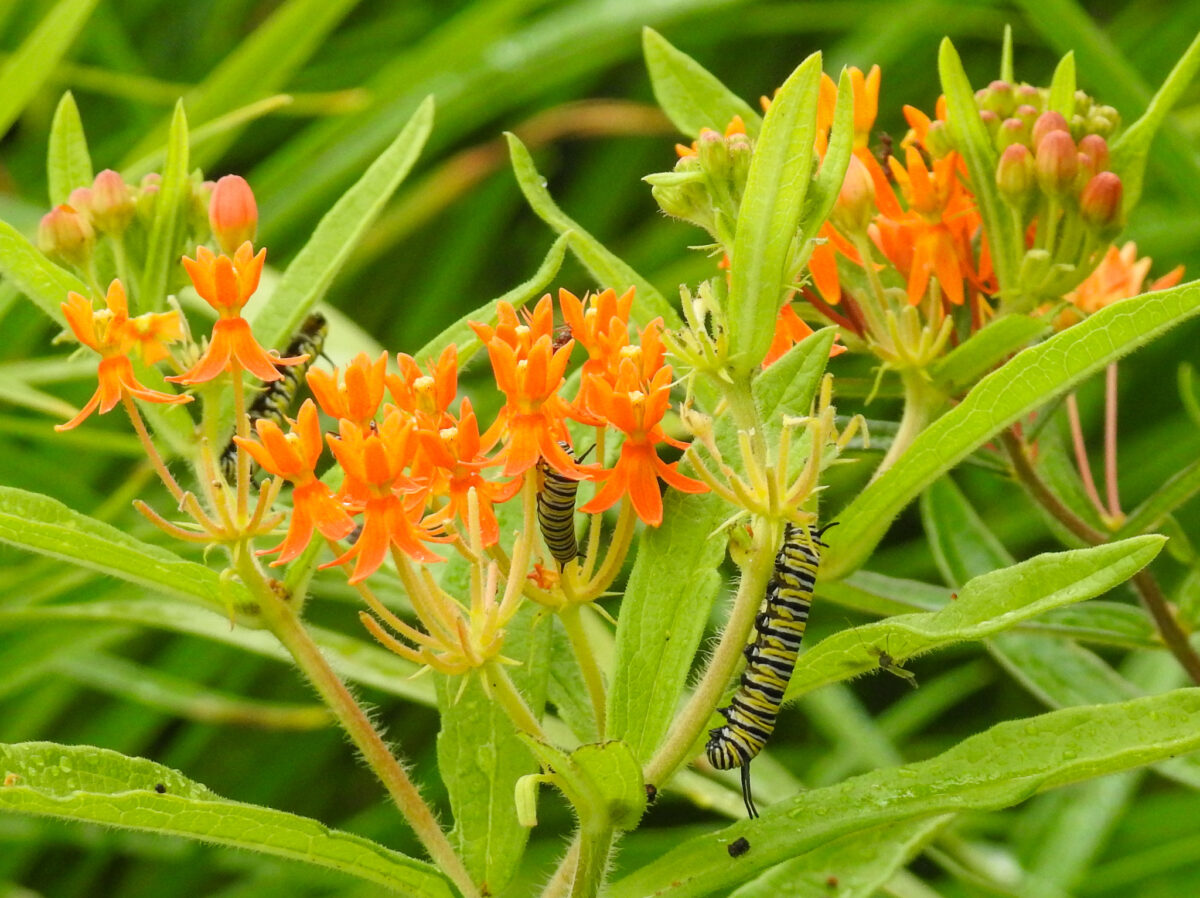
Until roots are well established, milkweed plants should receive a light daily watering, ideally in the morning.
Once established, milkweed doesn’t need watering, except during periods of drought or in extremely arid regions. When watering is required, water deeply and slowly to get 1 to 2 inches of water. Wait until the top inch of soil is dry before watering again, as overwatering can cause a lethal fungus.
Some milkweed varieties, such as butterfly weed, prefer drier conditions and rarely require any watering at all. Other types, such as swamp milkweed, require moist soil. If your soil isn’t moist, you can accommodate this species with regular watering.
Fertilizing Milkweed
Milkweed doesn’t need fertilizing. As a native plant, it tolerates poor soils. In fact, according to University of Michigan researchers, fertilizing tropical milkweed (especially with nitrogen) increases the levels of toxic cardenolides, which can stunt or kill monarch caterpillars. Fertilizer doesn’t seem to have the same effect on perennial milkweed varieties, however.
Pruning Milkweed Plants
Milkweed does not need to be pruned. However, where it grows as an annual, you might want to cut it back to the ground in the fall and spread the seeds for spring growth. Even perennial plants can be cut back in late winter to early spring. When you see new basal growth, cut the old stems back to 6 inches from the ground.
Deadheading, while unnecessary to survival, can encourage more blooms. It can also prevent self-seeding if you don’t want your milkweed patch to spread.
Milkweed sap can cause irritation, so wear gloves and eye protection when pruning or deadheading milkweed.
Propagating Milkweed Plants
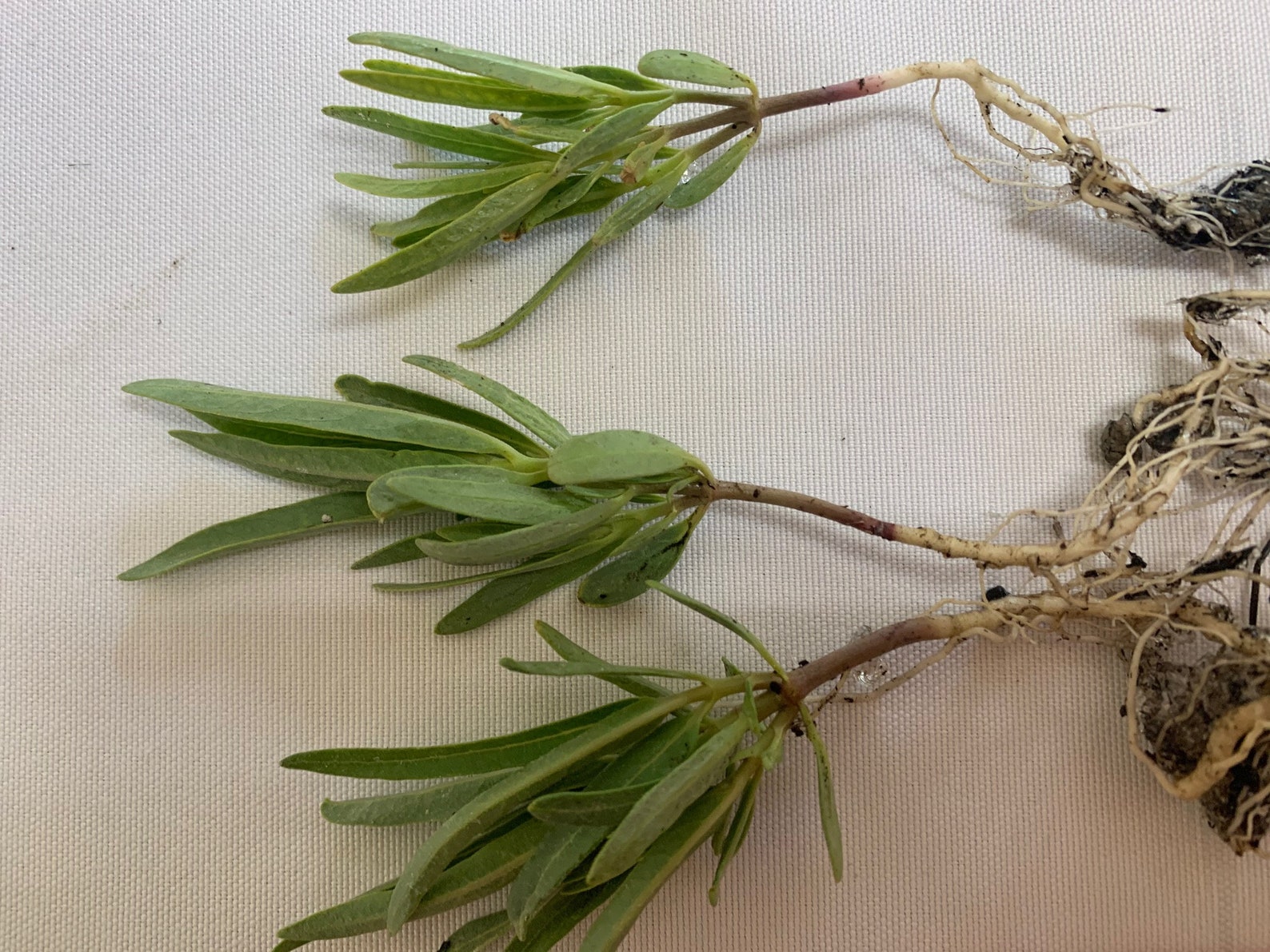
Milkweed can be grown from seed or cuttings taken from the root, rhizome, or stem. Cuttings should be taken in late fall or early spring when the plant is dormant.
Because milkweed produces deep taproots, digging up rhizomes can be difficult. Taking cuttings from the stem is often easier. Follow these steps:
- Use a clean, sharp knife or garden cutting tool to take cuttings from 4-inch-long stems with at least three to five leaf nodes.
- Remove the lower leaves and coat the bottom of the stems with rooting hormone.
- Place stems upright in an 80/20 potting mix of perlite to peat moss.
- Moisten soil and place pots in a cool spot out of direct sunlight for 6 to 10 weeks.
Note that new sprouts often produce flowers the first year.
Safety Considerations
Milkweed sap contains cardenolides that are toxic to people and pets. That makes it dangerous to ingest milkweed, but large quantities of leaves must be consumed to cause serious illness.
Milkweed sap can also cause eye and skin irritation. Therefore, gloves, long sleeves, long pants, and eye protection are advised when working with milkweed.
Not all milkweed varieties are the same. Some are extremely toxic, while others are only considered dangerous under specific circumstances. Always take precautions when working with milkweed.
Potential Pests and Diseases
In general, milkweed is unaffected by any serious pests or diseases. However, aphids, whiteflies, scale, spider mites, thrips, leaf miners, and milkweed bugs, all of which are immune to the plant’s toxins, sometimes feed on the leaves and seed pods. The damage they cause is thankfully minimal in most cases. Nevertheless, you can usually hose them off with water. Just be careful when doing so, taking care to avoid hitting clusters of monarch eggs attached to leaf undersides. Snails and slugs may go after young milkweed plants, but any snail bait you use won’t harm monarch butterflies.
Fungus can be an issue if milkweed plants are kept too wet. Meanwhile, leaf spot, verticillium wilt, and root rot can kill a plant and are often difficult to eradicate, so avoid overwatering milkweed.
RELATED: Japanese Knotweed: How To Get Rid of The “Godzilla” Weed That’s a Threat To Your Plants
Harvesting Milkweed Seeds
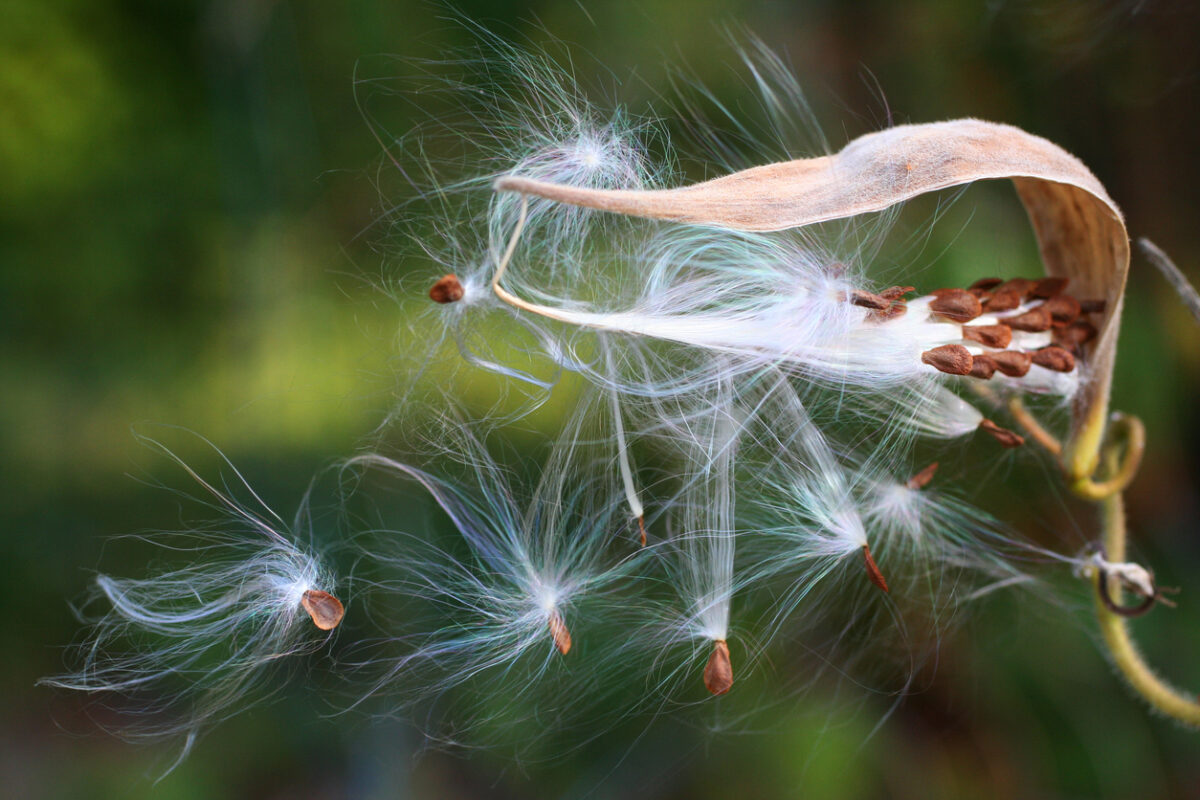
It’s easy to harvest common milkweed seeds. The plants produce large pods containing hundreds of seeds, but you should only harvest from ripe pods. They don’t need to be pulled off the plant to assess their ripeness; simply apply light pressure. If they split at the seam, they’re ripe.
If the pod splits easily, peel it open with your fingers and remove the seeds and silk. The seeds inside will be brown if ripe. Do not harvest any pods infested by milkweed bugs, and be sure to leave some pods on the plants for natural regeneration.
Looking for more help with pollinator gardens and native plants? Check out our articles on growing butterfly gardens, flowers that attract bees, and endangered native plants.

